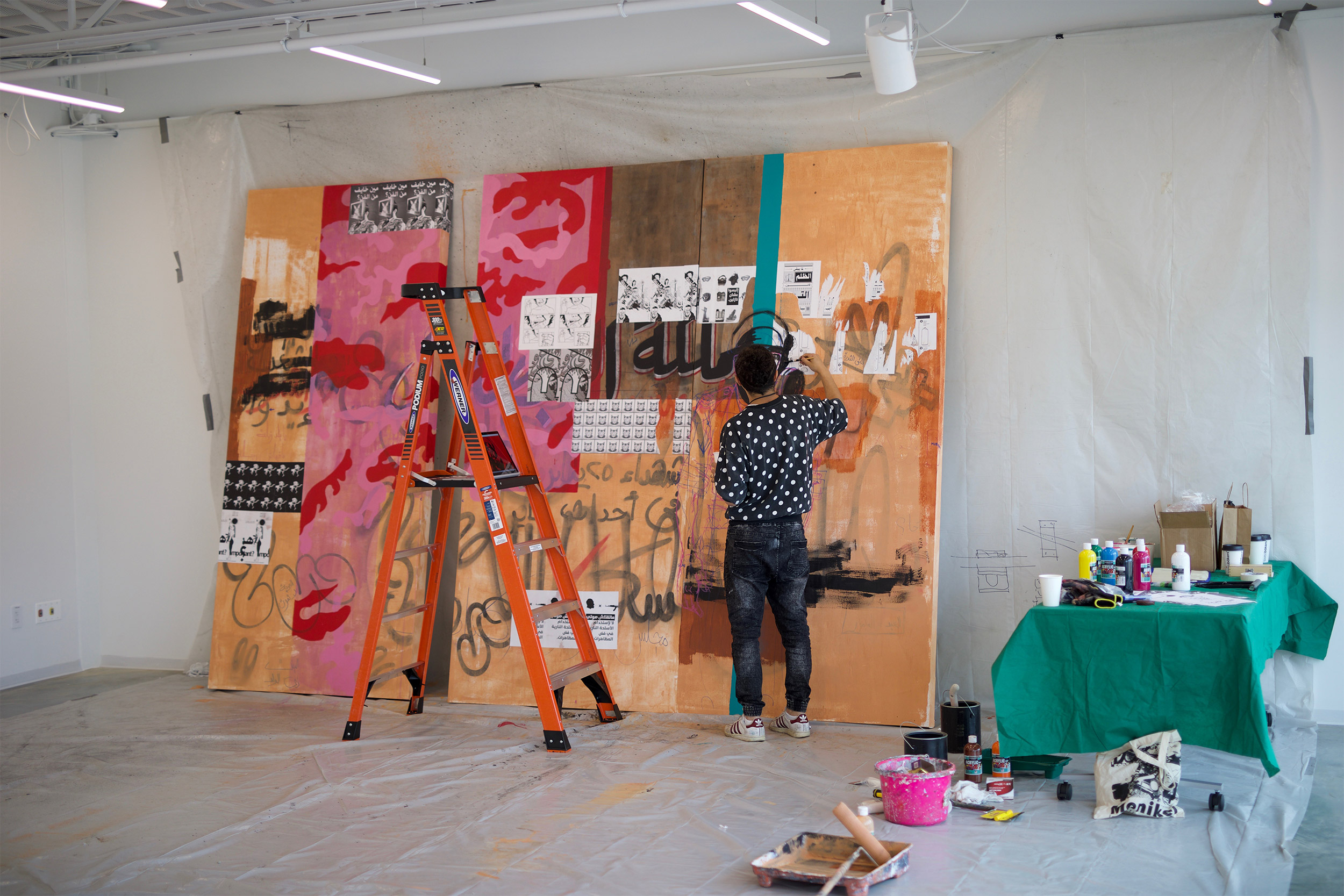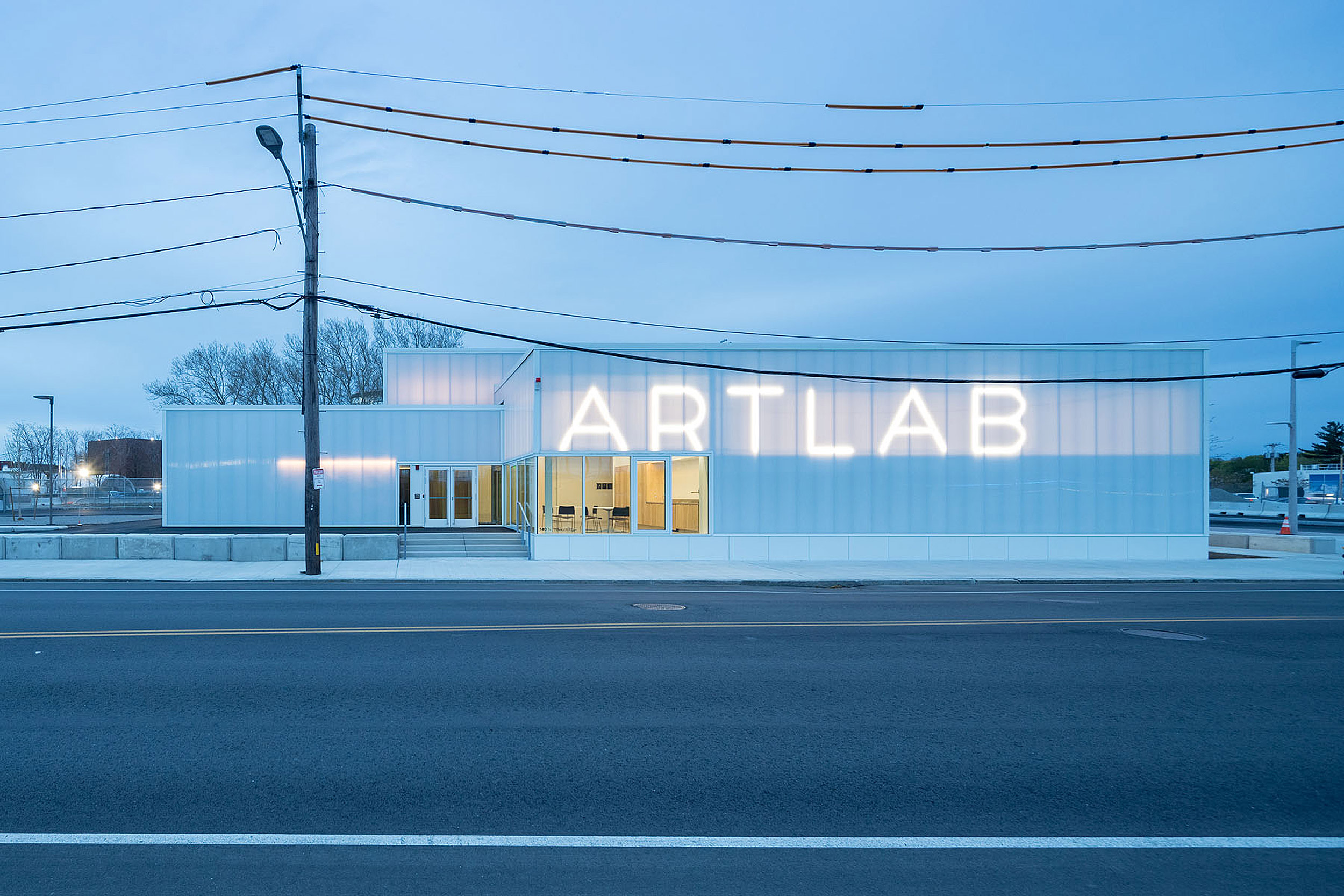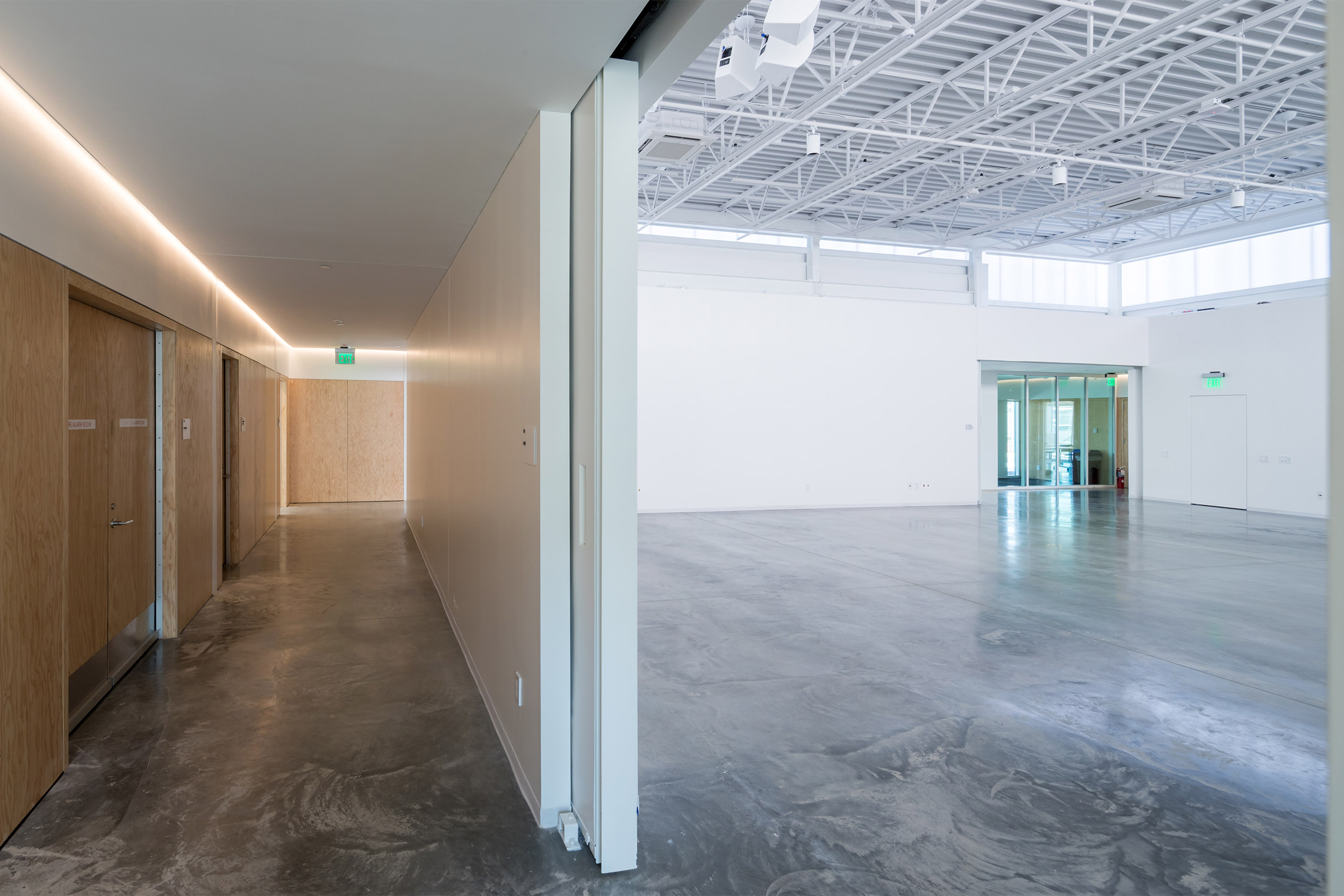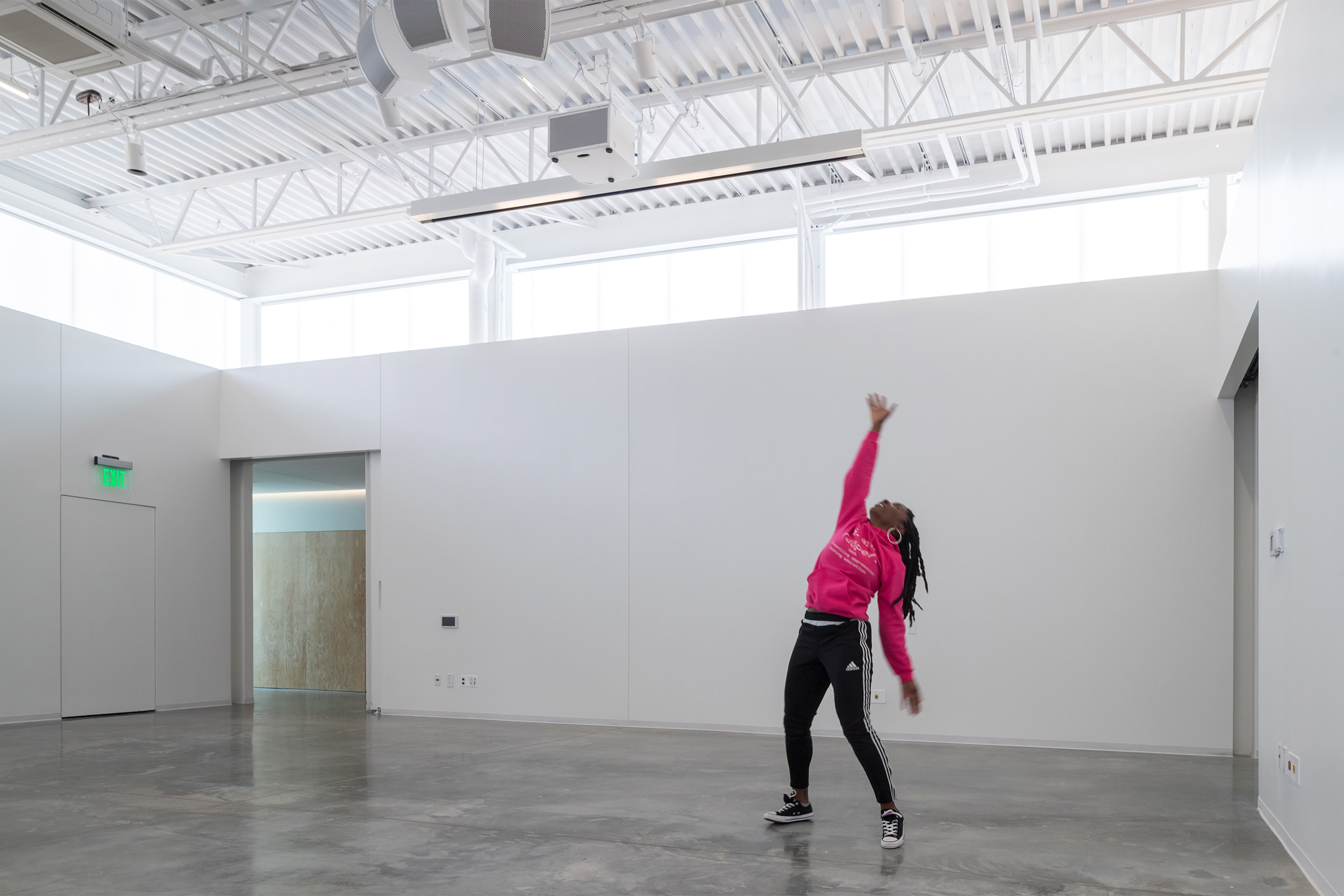
A series of open houses will let visitors see how the ArtLab brings together artists and academics.
Breaking artistic boundaries
New art-making space in Allston opens its doors to the public
So where can teachers and students, academics and artists, musicians and dancers with different backgrounds and areas of expertise come together to find and explore the fresh perspectives required to breathe life into new works?
Visit Harvard’s newest laboratory this week to find out.
Located on North Harvard Street, the ArtLab is the University’s latest Allston laboratory devoted to creative inquiry, research, and experimentation. Drawing on Harvard’s myriad artistic makers, the ArtLab will foster interdisciplinary collaboration, investigation, and connection within the community and with established and emerging artists. In the coming days, members of the University and the public can experience and explore the new creative space for themselves during a series of open house events.
“I am delighted that the ArtLab will bring a new presence to the thriving hub of creativity in Allston. I want to thank the many people from across our campus and beyond who have contributed to making the ArtLab a reality,” said Harvard President Larry Bacow. “The addition of the ArtLab ensures that Harvard arts, alongside business, science, and engineering, have an academic and creative home in Allston. I also want to acknowledge my predecessor Drew Faust, whose vision helped bring about this incredible incubator for the arts.”
On Friday, an ArtLab open house from 2 to 4 p.m. will feature performances by Ilya Vidrin, whose doctoral work led to The Partnering Lab, a Harvard-based space that explores the underlying philosophy and psychology of physical interaction or collaboration in a range of fields, including music and dance.
On Saturday, the fun will kick off at 10 a.m. with a tap dance performance by the company Subject: Matter accompanied by a jazz band, followed by a performance by Vidrin’s Partnering Lab. The festivities will run through 12:30 p.m.

The ArtLab is the University’s latest Allston laboratory devoted to creative inquiry, research, and experimentation.
Photo by Iwan Baan
On both Friday and Saturday, visitors can also have their portraits taken with Boston-based photographer OJ Slaughter, who took part in a residency at the lab this summer; explore the lab’s sound studio; and take in “A*,” the multichannel art installation by Harvard Film Study Center Fellow Andy Graydon.
“Following a semester of successful interdisciplinary artistic experimentation, innovation, dialogue, and research, we are so excited the opening celebration of the ArtLab will feature artists who have already been inventing and creating in this dynamic new space,” said Lori Gross, Harvard’s associate provost for the arts and culture. “We can’t wait to see what kind of creative engine the space will become for the campus and for the arts.”
One of those early experimenters was Egypt-born artist Ganzeer, whose vivid street murals created during the Tahrir Square uprising in 2011 brought him widespread acclaim. Last May, Ganzeer visited Harvard in connection with the American Repertory Theater’s production of “We Live in Cairo.” He also took part in a residency at the ArtLab, creating three large canvases that will be on display during the opening celebrations.
Ganavya Doraiswamy, a singer and doctoral student in Harvard Music Department’s Creative Practice and Critical Inquiry program, recorded songs at the ArtLab this summer with Karthik Pandian, assistant professor in the Department of Art, Film, and Visual Studies, and choreographer Andros Zins-Browne for their upcoming exhibition “Atlas Unlimited Acts VII-X,” based on the story of Zakaria Almoutlak, a Syrian sculptor and refugee currently living in Brussels. The building’s natural light, its “live” acoustics, and above all its focus on collaborative research and practice make the ArtLab a “special place,” she said.

“The idea was to consolidate things into one building so that there could be this interface between different disciplines and activities,” said architect Frank Barkow.
Photo by Iwan-Baan
“Spaces carry memories, and having a space that knows what it feels like to witness process — many peoples’ processes, again and again — this is a special and necessary thing in this world … that binds us all as creators — our commitment to the process.”
The lab will host a range of Harvard artistic experts and experimenters who will lead rehearsals, workshops, and classes with students, among them flutist Claire Chase, a professor of the practice in the Music Department, and composer and singer Meredith Monk, the Fromm Lecturer on Music. Both Chase and Monk will collaborate with Harvard students on new compositions, taking advantage of the ArtLab’s innovative pinwheel design conceived by the German firm Barkow Leibinger in partnership with Sasaki Associates in Watertown. The 9,000-square-foot, net-zero-energy building features a collection of studio spaces, sound and recording rooms, a small exhibit area, and a workshop arranged around a 1,600-foot multipurpose open-space “hub” that can be used as a site for collaboration, gatherings, exhibitions, film screenings, dance rehearsals, and more.
“The idea was to consolidate things into one building so that there could be this interface between different disciplines and activities,” said architect Frank Barkow, who received his master’s degree in architecture from the Harvard Graduate School of Design in 1990 and has been a frequent visiting professor at the School. “We wanted everything on one floor. We wanted a building in which every program point was in close proximity to the others so that it would be a communicative, discursive space that would foster that creative exchange.”

Dancer Aysha Upchurch in one of the ArtLab spaces.
Photo by Iwan Baan
Architects also wanted an inviting space that fronted both the Harvard and Allston communities. Its placement on a corner means “there’s no real back to this building,” said Barkow. The use of a simple steel constructed frame covered by a light, polycarbonate skin and clear glass lends the building another inviting touch. At night it appears to glow, said Barkow, “almost like a beacon or a kind of lantern.” (Architectural models of the building, including an illuminated version, will be on display during the opening.)
The ArtLab joins a range of existing innovation labs already in Allston: the Harvard i-lab, the Launch Lab X, and the Pagliuca Harvard Life Lab. For many, the idea of a lab where students, Harvard faculty, and visiting artists can come together to do the rigorous work of creative collaboration is a dream come true.
“I was immediately excited about the space and its potential,” said Cecilia Zhou ’22, who first visited the space as part of Harvard’s Summer Humanities and Arts Research Program this year.A joint concentrator in English and the history of art and architecture, Zhou, who has been helping promote the official opening as an ArtLab intern, said the space’s design and its embrace of interdisciplinary artists from Harvard, Allston, and Greater Boston “fosters a uniquely synergistic creative environment.”
“People often forget that art, whether visual, performing, or otherwise, does not simply materialize in galleries or onstage. Rather, it takes months or even years of experimentation, mistake-making, and rehearsal in order to produce a work of art,” said Zhou. “The ArtLab offers the space and resources in order to successfully undertake sophisticated artistic projects.”
For additional information, visit the ArtLab website.




